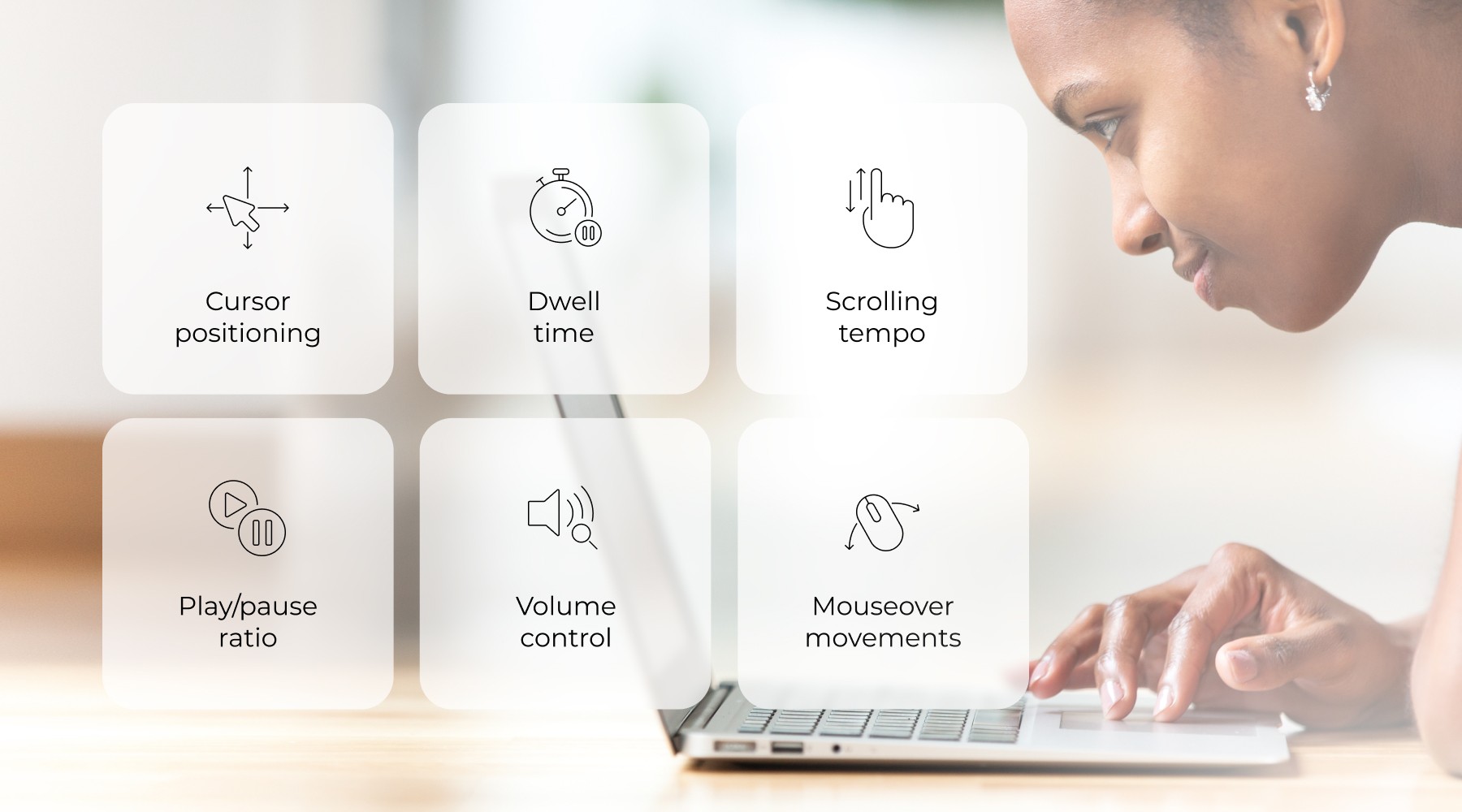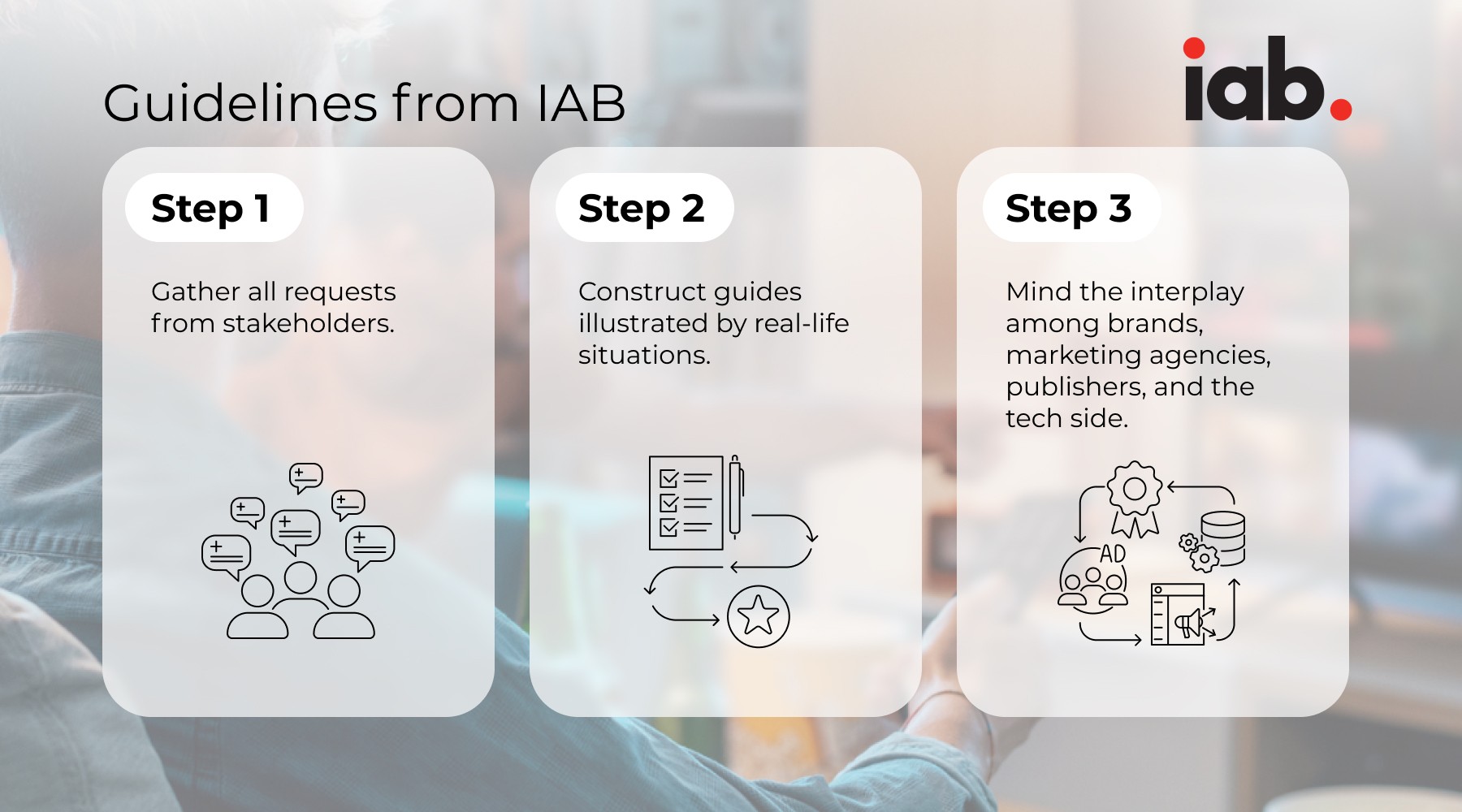Attention metrics: An ad world’s new citizens
The figures are shouting out loud: viewability metrics no longer work when it comes to measuring ad efficiency. With ads popping up everywhere and annoying autoplay, it’s like they are saying to a consumer, “Run, Forrest! Run!”, like in that legendary movie phrase. Or, to put it without the movie talk, people just don’t want to be overwhelmed with all this ad diversity, so they start ignoring it altogether.
And here’s the sad but true part — even though the average viewability indicator went up, the second-in-view numbers were falling deep in 2019-2022, as reported by Integral Ad Science (IAS).

Average viewability vs seconds in view within 2019-2022 years, source: IAS
What does it mean? To figure out if a consumer actually saw an ad, advertisers still rely on viewability metrics. But are they really the best way to determine if the ad message hits the bull’s eye? Not really.
Here’s the lowdown: back in that far-off year 2020, attention was forecasted to be a major ad KPI within a year or two. So, did that prediction actually come true?
Yeah, pretty much. And there are some stats to back it up:
- A survey done by the Interactive Advertising Bureau in November 2022 showed that about a third of all the decision-makers on the ad-buying side in the US were planning to put attention metrics at the top of their priority list in 2023.
- But wait, there’s more — according to a report by Statista, a whopping 96% of advertisers all around the world are either already using or have plans to use attention metrics in their media buys.

Anyway, the question remains: What’s with all the hype around attention metrics? Could it be just another trendy fad, or is there more to it? Are these metrics truly as promising as they claim, deserving of a prime spot in measurement strategies?
To shed light on the topic, let’s address some common doubts that naturally crop up when exploring the realm of attention metrics.
Do attention metrics in advertising really hold potential?
Attention metrics are a notion hitherto regarded as vague
Bias one is related to the fact that the approach to measuring attention rather than views and impressions is newly recognized, thereby causing the emotion of mistrust.
What’s the truth?
While the old guard of metrics, such as impressions and views, may have enjoyed a head start, their Achilles’ heel lies in their neglect of what truly matters to advertisers. It is not simply about whether an ad has been seen or not, but rather the captivating allure that fosters meaningful engagement and campaign efficacy.
Enter attention metrics in advertising, focusing on genuine interest, duration of interaction, and the coveted impulses that drive consumers to embrace the promoted services or possess the featured products.
The importance of attention metrics is exaggerated
Prejudice two is bound with the relentless surge of attention metrics at the very core of publishers’ measurement methodologies. An AdMonsters report reveals that nearly 90% of publishers surveyed are fervently relying on attention metrics at the behest of advertisers’ unwavering desires.
Yet, let us dare to question: Do these resolute numbers, cascading forth in their grandeur, make any sense at all if this trend is fuelled by advertisers’ insistent pursuit to treat attention metrics as key campaign criteria in requests for proposal?
What’s the truth?
The burgeoning fascination with attention metrics, as perceived from the advertisers’ vantage point, is not without purpose. As mentioned earlier, it’s no longer sufficient for them to ascertain that their intended audience has laid eyes on their promotional content. The primary objective lies in delicately coaxing viewers into taking the desired action.
A mere click does not necessarily suggest genuine intrigue; it may likely stem from fleeting curiosity devoid of any commercial interest. Similarly, the act of viewing alone does not yield significant insights — we all, at some point, “viewed” TV broadcasts while seizing the moment to fetch a second cup of tea from the comfort of the kitchen.
These real-life scenarios, among other things, have prompted advertisers to redirect their focus towards more meaningful endeavours. Attention metrics come in handy as an ally in unravelling a person’s emotional response. How did they engage with the advertisement? What sentiments or musings did it evoke within them? Did the ad genuinely resonate with their prevailing state of mind? No gimmickry or extrasensory wizardry, mind you — it’s the attention metrics that work their magic.

Attention measurement will hardly replace good old CTR
The third assumption seems to suggest that this hype lacks longevity. It stems from the stark reality that click-through rate (CTR) is unanimously hailed by publishers as the front-runner among all campaign criteria, according to AdMonsters. Despite the rapid proliferation and deep integration of attention metrics into publishers’ priority lists, they face an uphill battle against alternative metrics that have already established their value.
Remember Clubhouse? It emerged from thin air, shone bright like a diamond… only to vanish from our collective consciousness in an instant. While attention metrics bear no direct connection to that app, one might extrapolate that their rapidly surging popularity could eventually lead to their own evaporation.
Do you question whether attention metrics can triumph in the race among ad campaign criteria?
Their potential is already immense, and it will only continue to rapidly expand in the future.
What’s the truth?
While CTR reigns supreme in the arena of ad campaigns, there is a rising tide of other methods that demonstrate their ability to measure the attention of viewers. Today’s numbers speak volumes: such criteria of attention measurement as scroll depth or ad dwell time are implemented by an average of 25% of publishers.
There are clearly formulated attention metrics approaches and samples within each, which proves that CTR has faced formidable contenders showing no signs of relenting in their pursuit to dethrone the click-through rate.
So, what are these attention metrics that harbor grand aspirations of surpassing the CTR? Let’s take a closer look.
As Angelina Eng, the VP of Measurement, Addressability, and Data Center at IAB, announces, all attention metrics can be measured according to the three following conceptions:
Biometric surveillance
Being the most controversial in terms of privacy hazards, biometric data tracking stands tall as the apex approach. Here we’re talking about a person’s physical movements and psychological reactions to the ad content they absorb on their web, mobile, or TV devices. Is a consumer satisfied with what they see? Does he or she pay attention to what’s going on right now on the screen, or stay totally indifferent or distracted by other things?
Eye tracking or facial coding technologies serve as the gateways to capturing the subtlest nuances of human attention. Each blink or fleeting expression becomes a treasure trove of insights.
Biometric methods also comprise devices capable of identifying the presence of individuals in the space where an ad is presented, or a “mute” mode.
Data proxy
Data proxy signals are integral to the art of gathering valuable information derived from either devices or publishers and pertaining to the activities — or absence thereof — of individuals engrossed in watching ads. Although the attention metrics falling under the umbrella of data proxy signals fluctuate and their selection hinges on the format, we’ll present a few that bear mentioning:
- Cursor positioning
- Dwell time
- Scrolling tempo
- Play/pause ratio
- Volume control
- Mouseover movements

Psychological aspect
This section concludes the attention metrics report for a good reason — the data valid here pertains to a user’s introspection and emotion responses following exposure to an advertisement. Chat forums, discussion panels, questionnaires, feedback forms, or client surveys are invaluable tools for gaining a comprehensive understanding of brand perception through the eyes of the audience.
The thorniest question lies in the fact that a mere 20% of publishers are willing to acknowledge that their inventory and attention metrics are already an ideal combination for meeting advertisers’ expectations. This reality has nothing to do with CTRs taking the lead in the campaign criteria list for the time being.
And if this segment of the ad ecosystem truly desires to stay ahead of the game for the hearts of advertisers, the solution is clear. They should dedicate themselves to exploring new, captivating ad formats to come up with attention metrics-centered offerings and win.
It’s still unclear how to measure attention metrics
As soon as the attention metrics space is still terra incognita, it generates misgivings about the ability to properly measure them.
What’s the truth?
Any unknown land requires particular care from the start, and that’s just the case when a thoroughly devised action plan is half the battle. IAB suggests a set of guidelines to ensure a cohesive, well-organized journey that yields fruitful outcomes rather than inundating with a labyrinth of perplexing metrics.
Step 1. Diligently gather and consider the array of requests and suggestions from stakeholders.
Step 2. Construct all-encompassing guides fed with real-life situations that offer a vivid portrayal of which measurement tactics align harmoniously with each unique business case.
Step 3. Don’t disregard the vital interplay among all parties involved, such as brands, marketing agencies, publishers, and the tech side. This will grant a balanced and unbiased judgment of attention measurement canons.

Bonus attached: A few tips to measure attention right
Tip 1. Prioritize diversity in your analysis
Rather than solely relying on a single indicator, consider a multitude of data points to get a comprehensive and more accurate machine learning prediction on whether the ad will reach the target.
Tip 2. Eye tracking as a must-have element
Eye tracking is an essential starting point that forms the foundation of attention measurement. How does the eye-tracking-based scenario look?
Just when the test group of viewers who have given their consent are fully caught up in the ad content, eye-tracking cameras closely examine the movements of viewers’ gazes across the entire screen.
Tip 3. The mix of approaches works
If you combine the insights you get after gathering data proxy signals and biometric observations based on facial coding or eye tracking results, this will favor smarter predictions made by an ML model.
What’s next?
Mastering attention metrics is in full swing, and you want to join the trend and need a gentle nudge to nurture your journey, don’t you? If you’re afraid of hidden pitfalls on the way to getting a hand in attention-driven solutions, our AdTech team knows how to deal with potential complexities and make attention metrics work to magnify your success. Do you mind if we reveal all the intricate details?


























